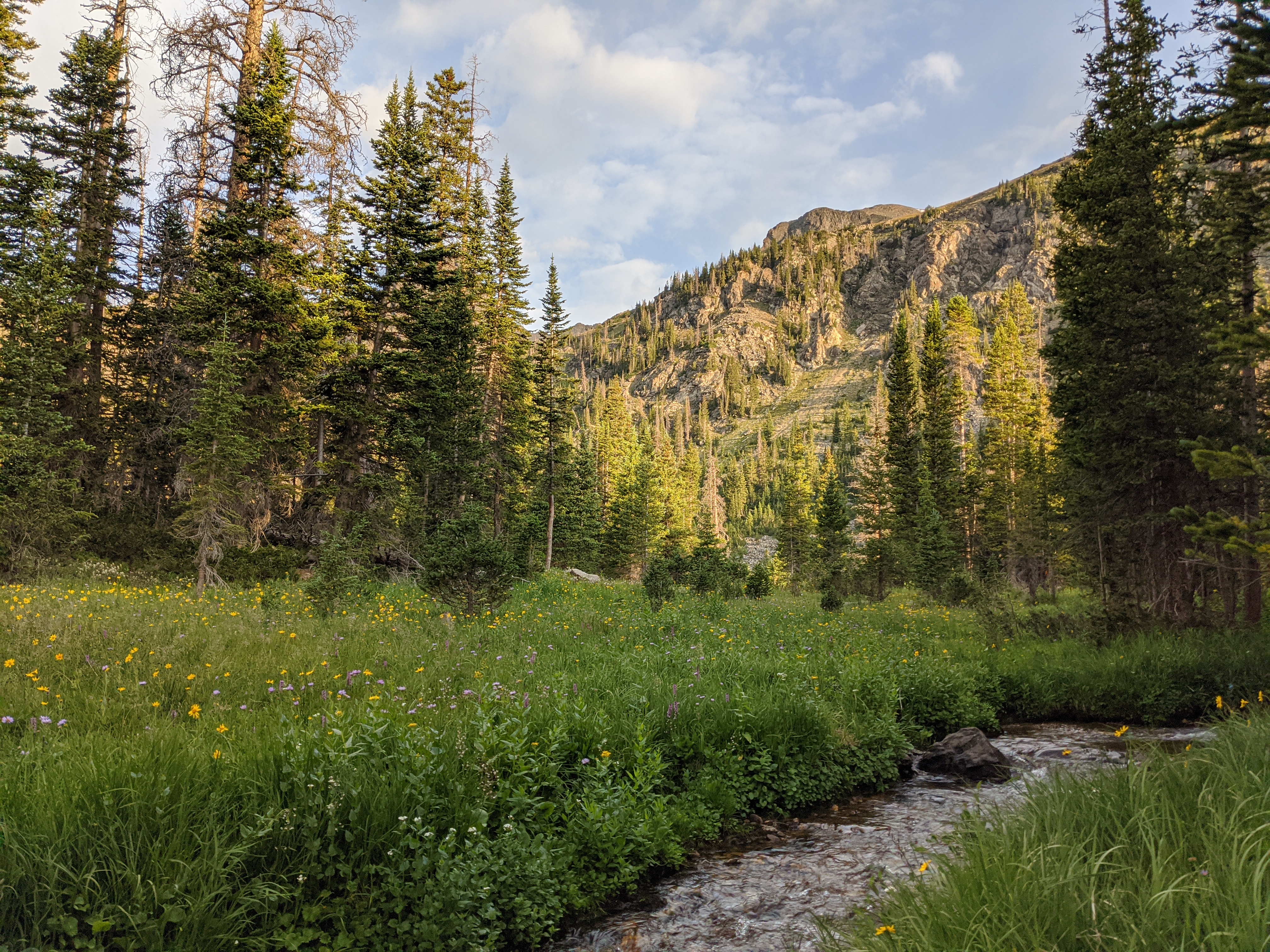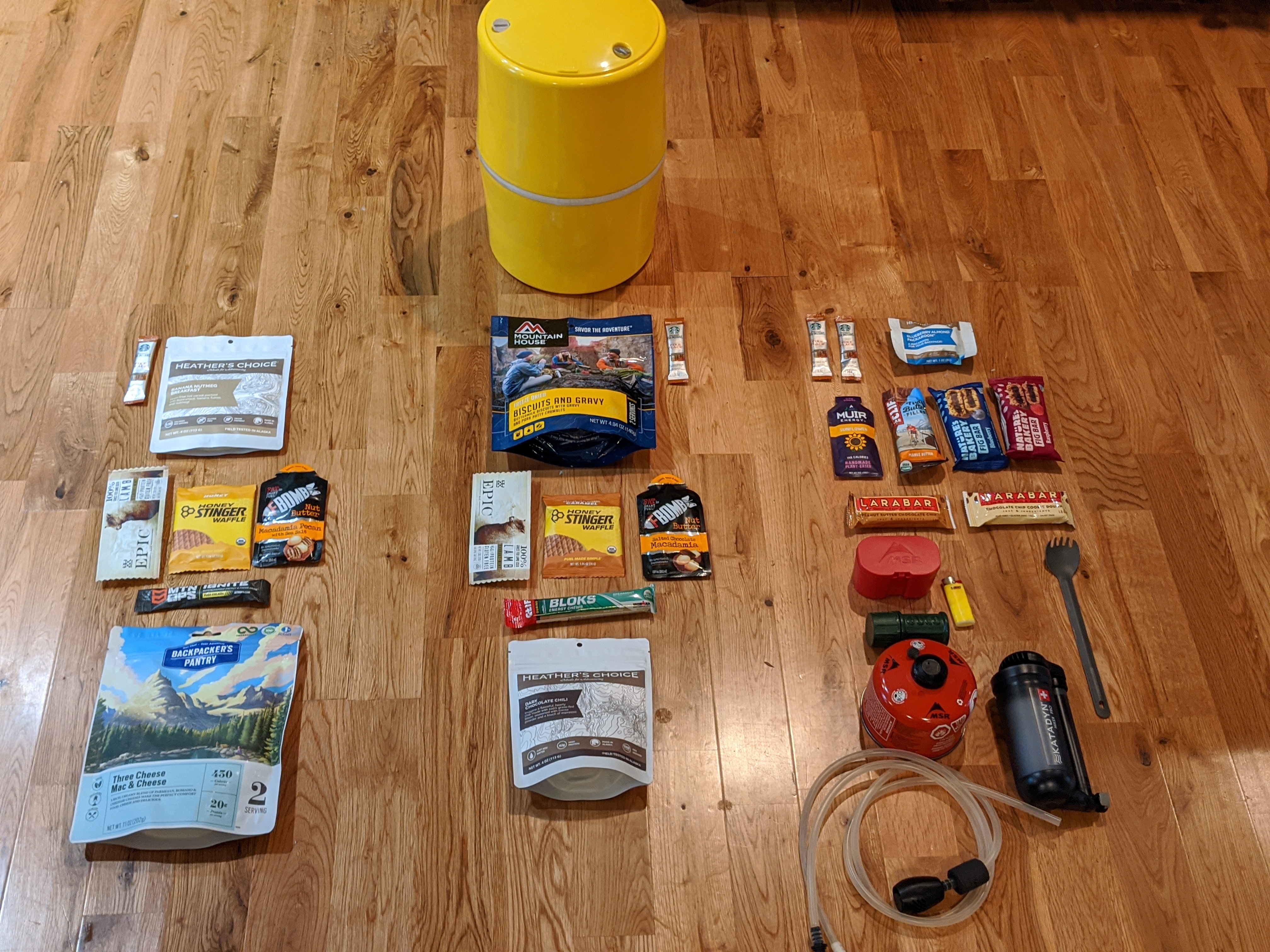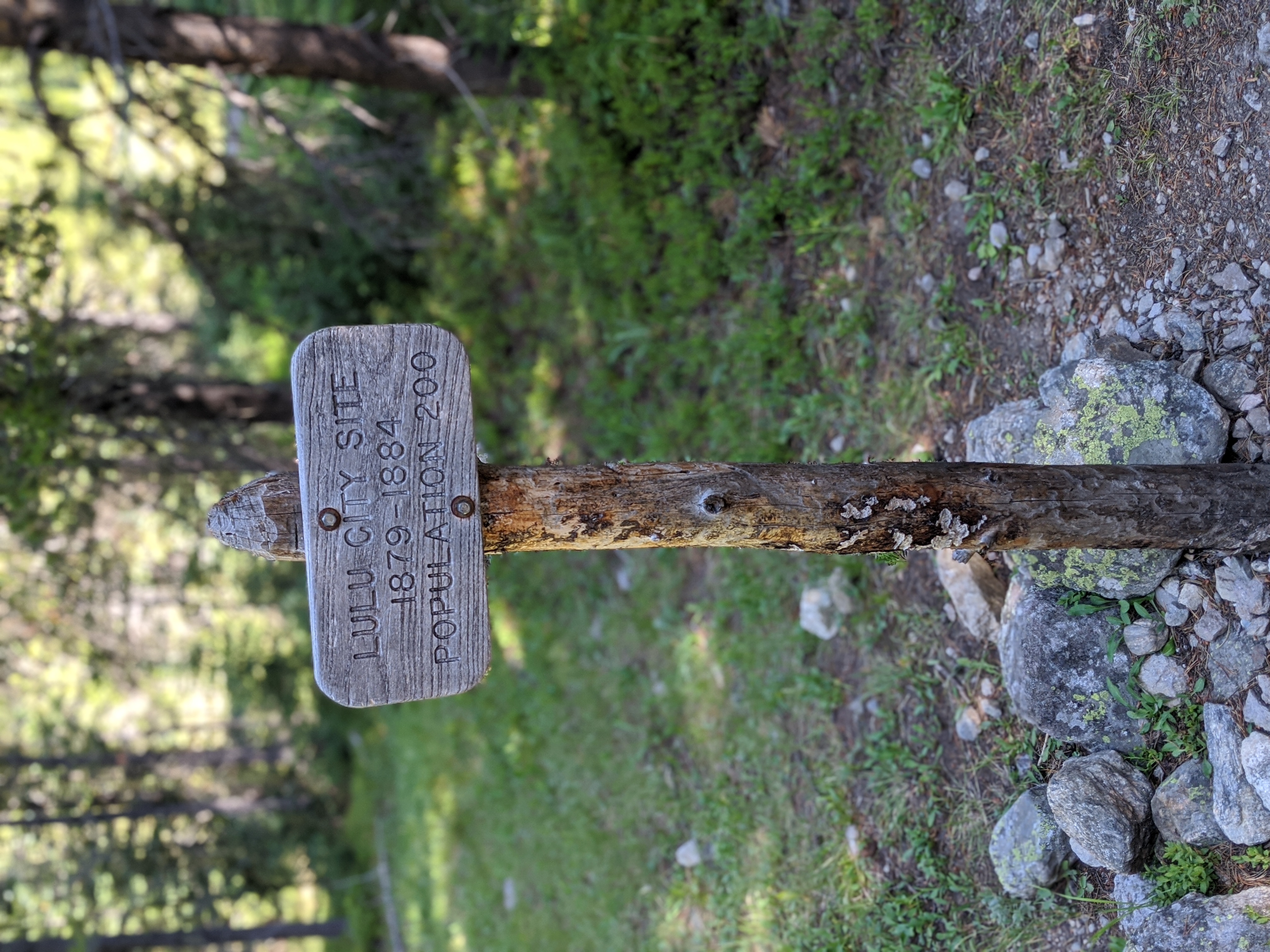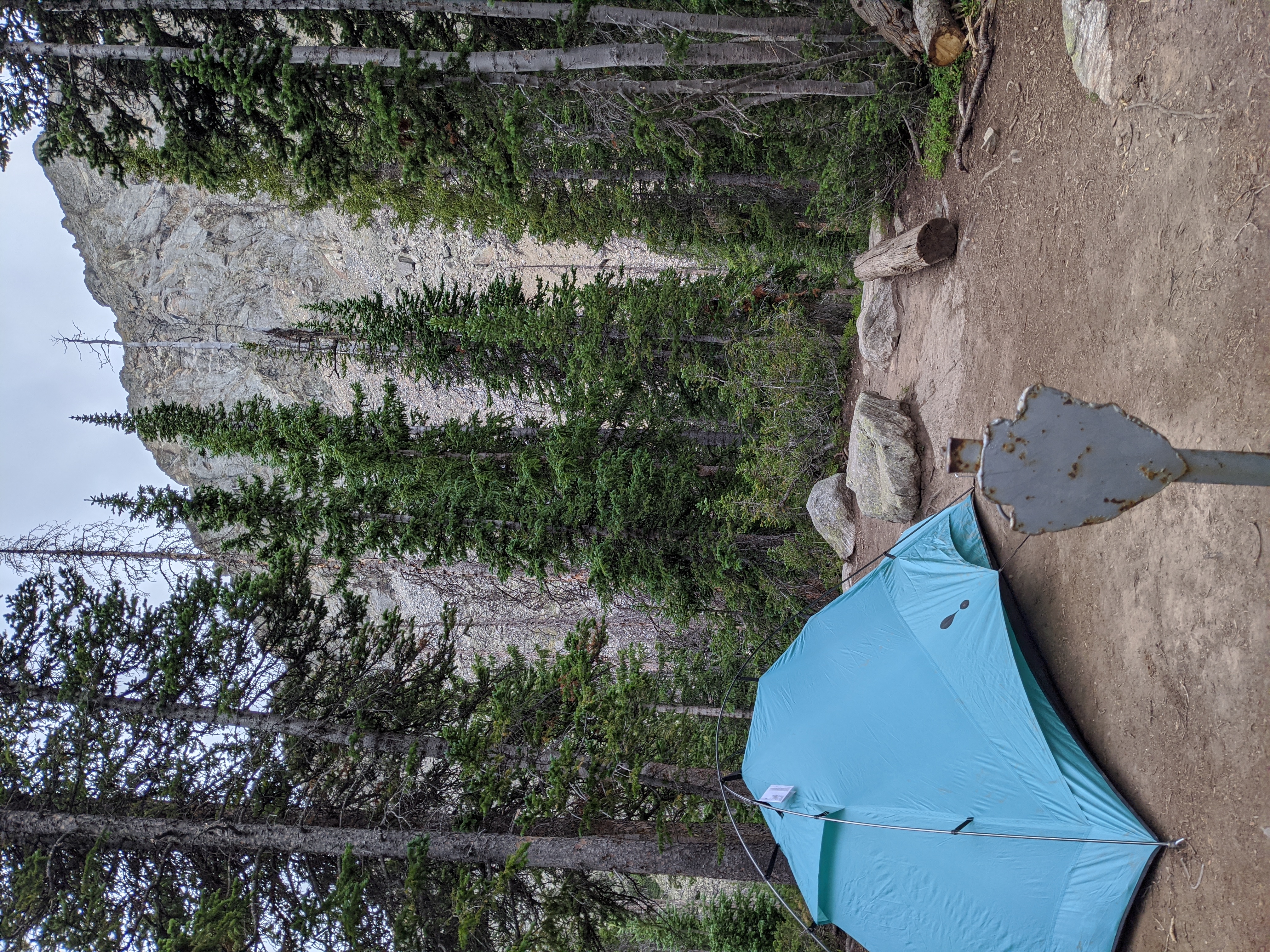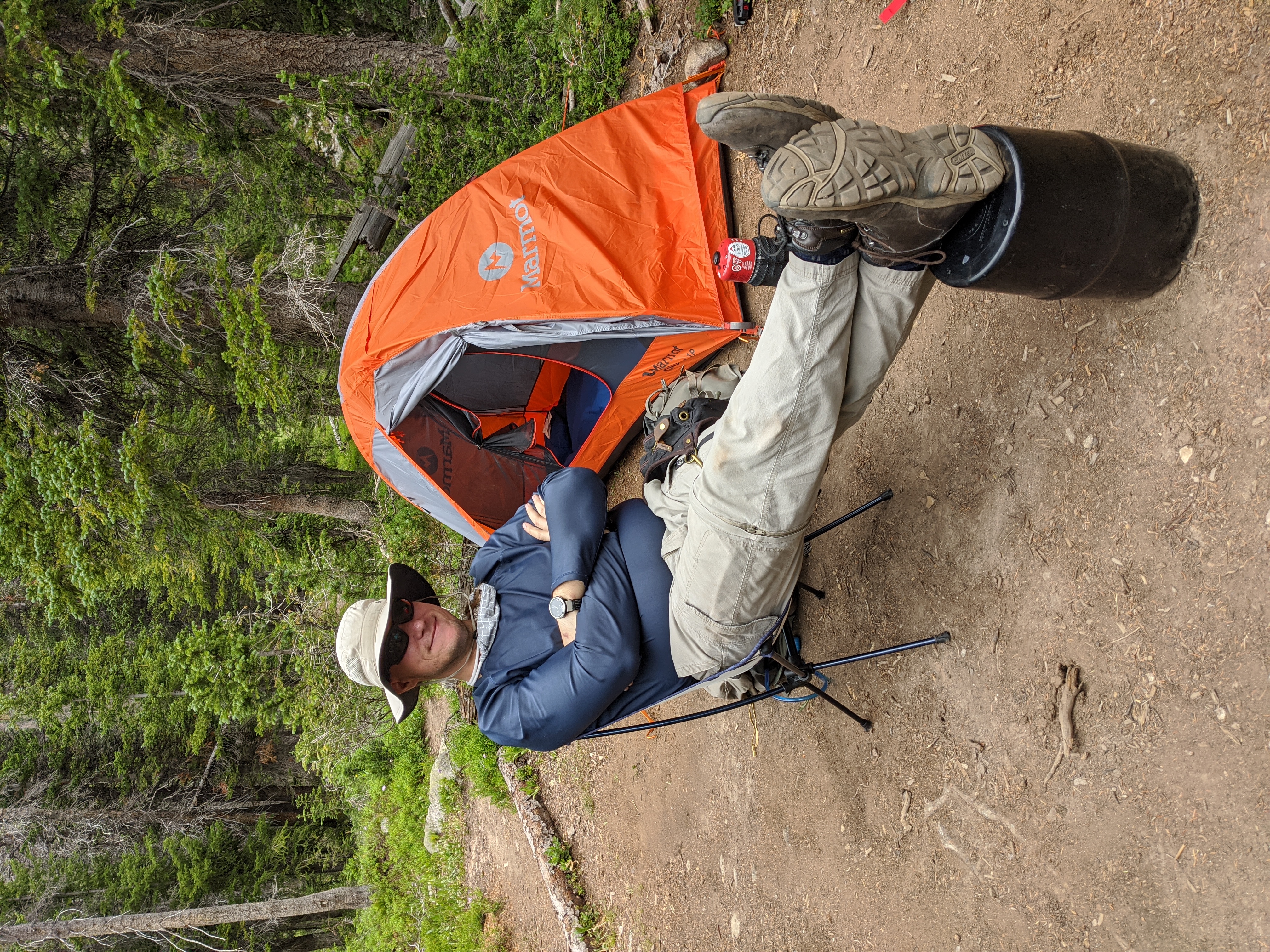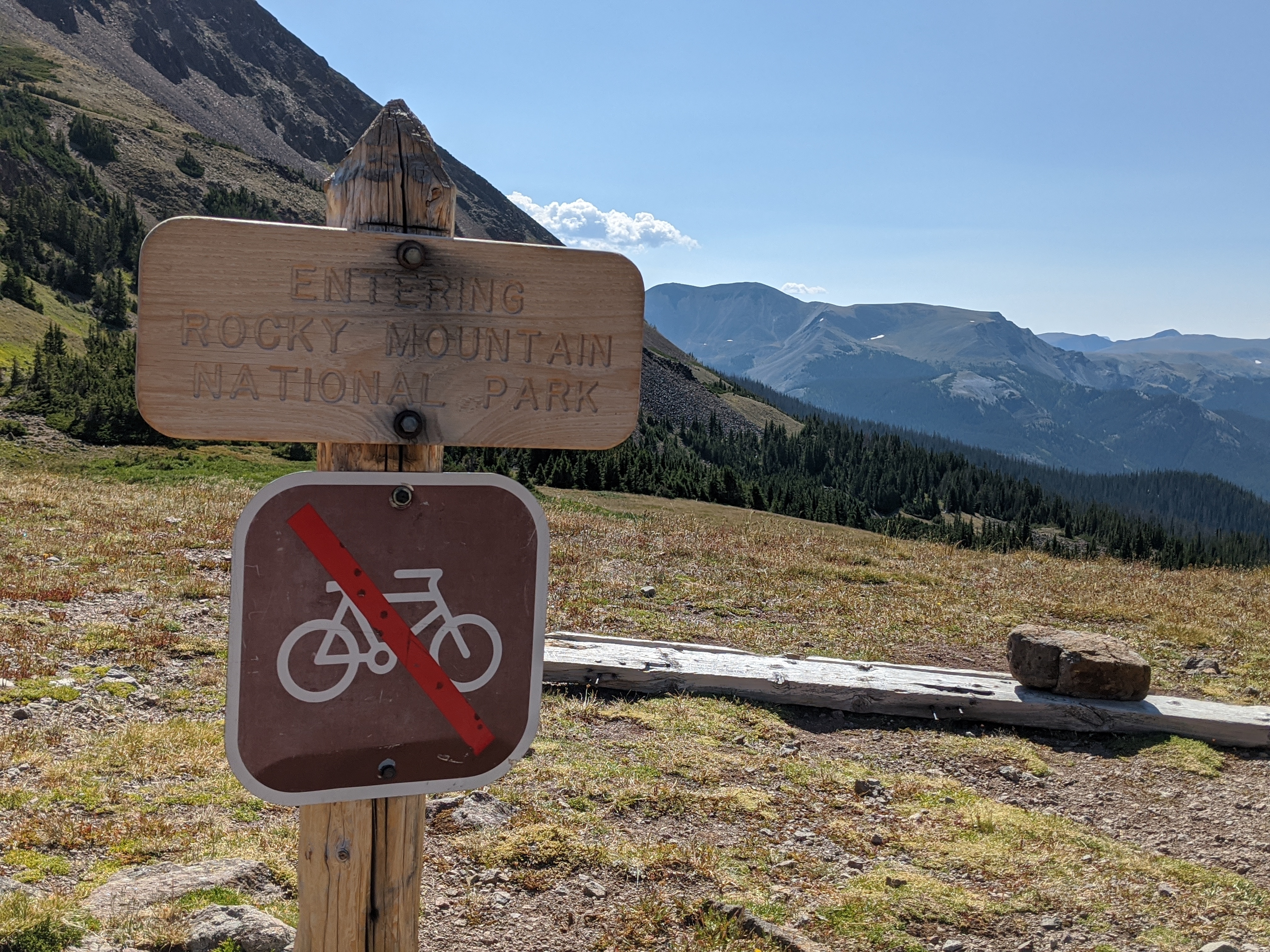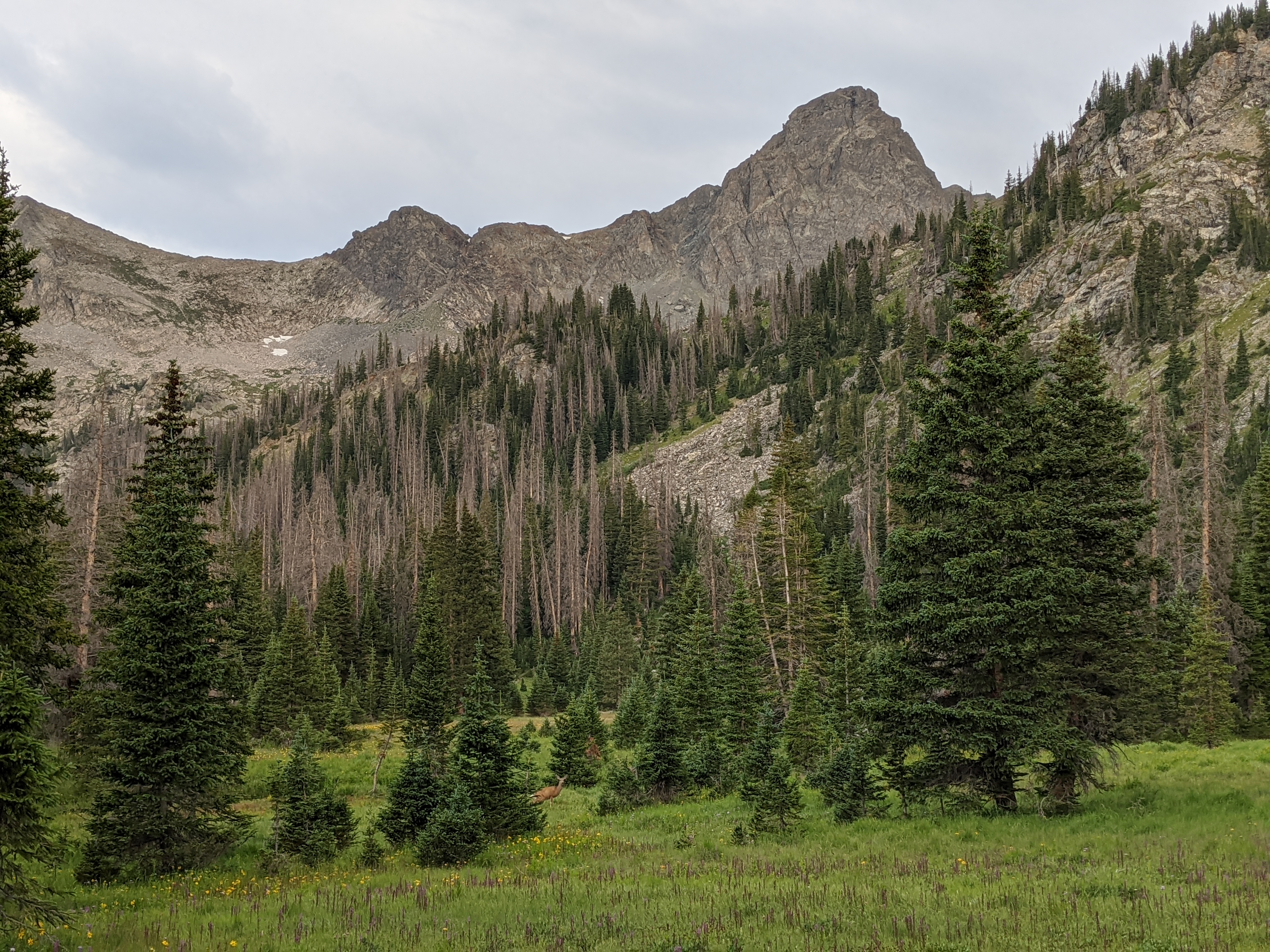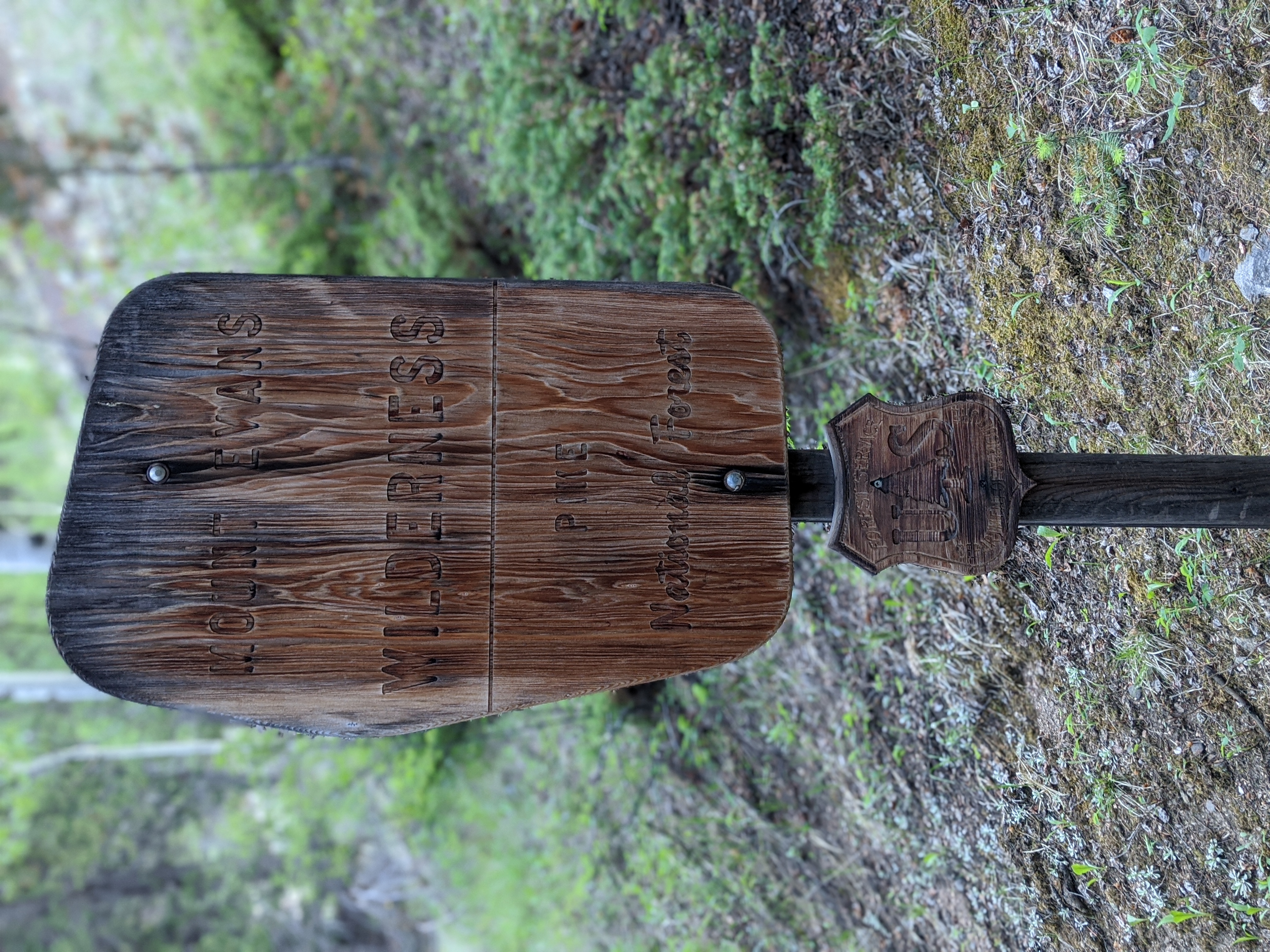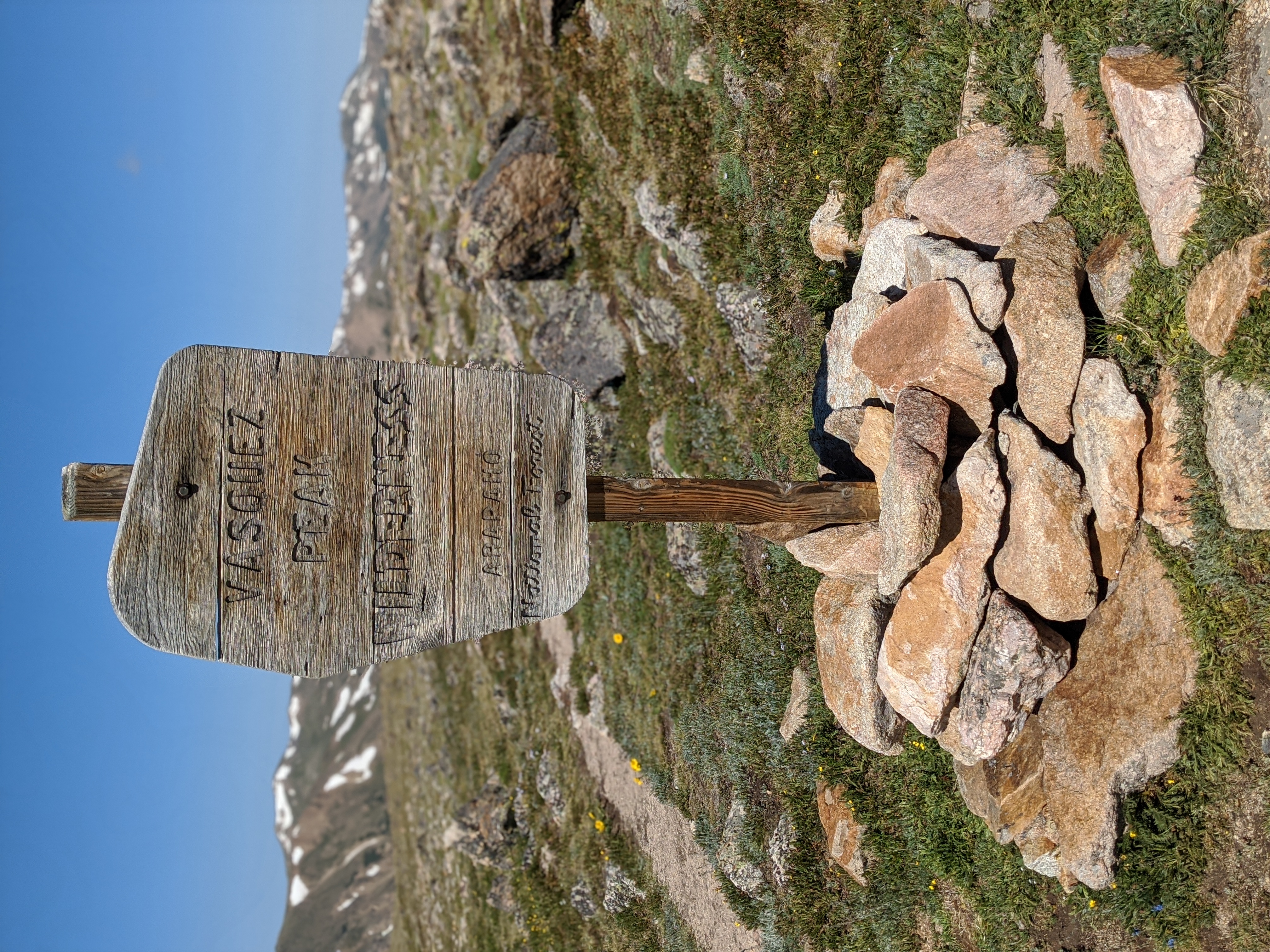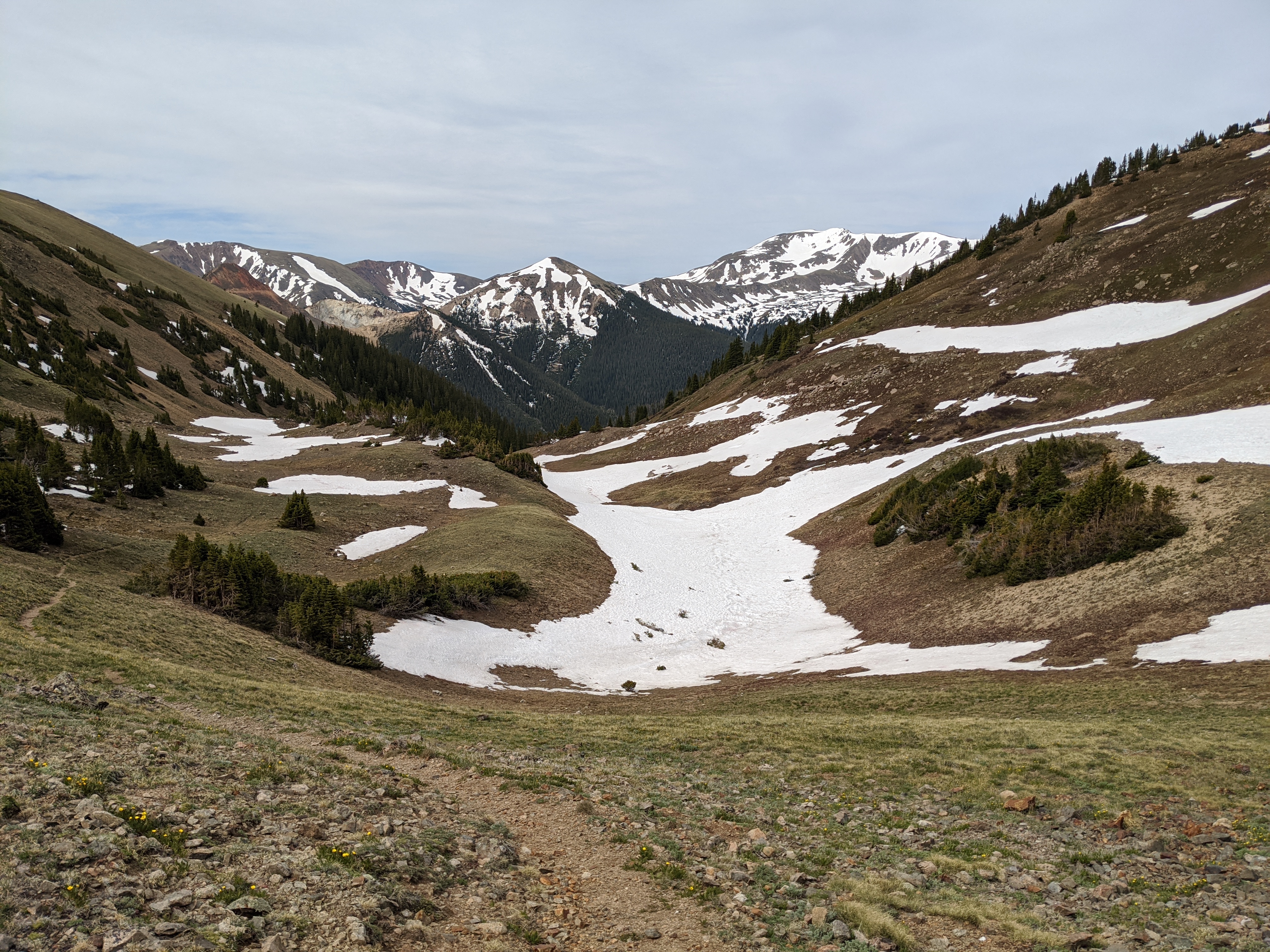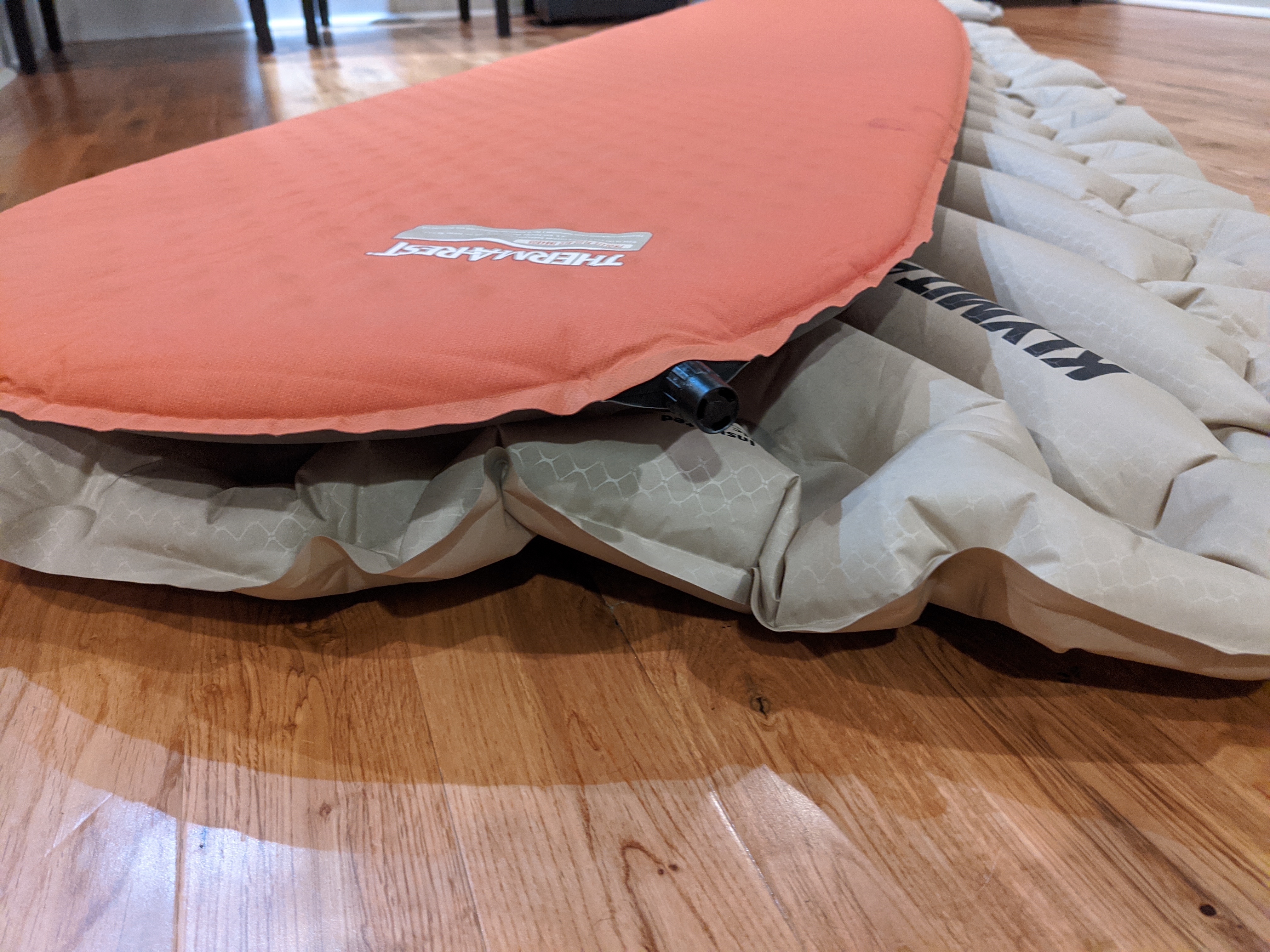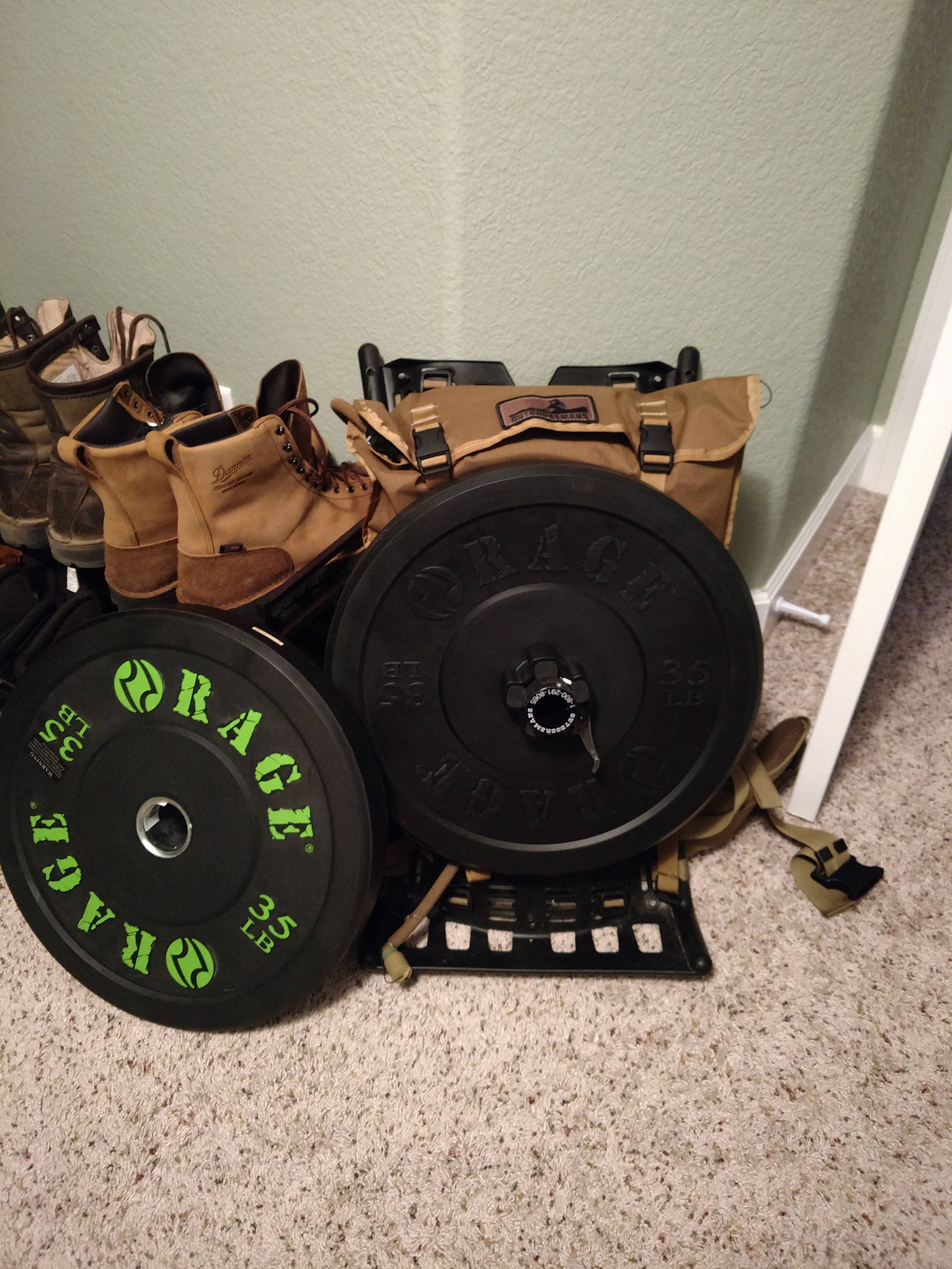Did you know that the interior of Rocky Mountain National Park is maintained as Federally designated Wilderness? Unlike a lot of other Wilderness Areas this land is managed by the National Park Service rather than the US Forest Service. All of the RMNP Wilderness falls inside the National Park boundaries. Additionally it’s bordered on all four sides by wilderness. Comanche Peak, Indian Peaks, Neota, and Never Summer bound the park in a virtually roadless area of protected beauty.
Before the global pandemic kicked off and the world seemingly ground to a halt I was looking at doing a backpacking trip or two this summer. I’m still very much a rookie at packing a bag, hiking any distance with it, and camping in the backcountry. Blocks for reservations in the national parks go quickly so I decided to go looking for something that met some of my requirements for a hike-in camp site. It needed to be more than 5 miles away from the trailhead, a hike with a fair amount of elevation gain, and have solitude. With those criteria I found the camp site at the head of Skeleton Gulch in Rocky Mountain National Park to be exactly what I needed.
The day of getting a reservation for the camp site I was at home, struggling with getting the website to work. It kept 404ing, slowing, and throwing me out of the reservation process. Eventually the website loaded, and I was able to — at least I think — get two nights at the same camp site in RMNP.
The Catch
In order to backcountry camp in RMNP, as well as some other National Parks you need a hard sided bear keg. While they can be rented at rates like $20/week they retail for $60-$80. So 4 trips is all it takes to pay them off. Problematically as part of the coronavirus pandemic a lot, a lot, of people were going into the woods. More than normal. Most stores were sold out of bear kegs, and the internet shipping times with companies at half staff or less were beginning to balloon.
Weeks out from my trip I decided I needed to get a keg of my own, and my best bet would be scouring all of the outdoors stores in the local Denver metro area. REI had it plastered on a sign out front showing that they had been swamped when they reopened. Out of bear kegs, bear repellent, and various backpacking accouterments, backpacking food was lacking, fuel was bought up. This wasn’t going to be easy. Cabelas was my next stop, always fairly reliable but since the Bass Pro Shops takeover I’ve found that changes are afoot. No bear kegs, but plenty of backpacking meals at $9 each. I’ll pass.
Sportsmans Warehouse in my town happened to have one. One single bear keg placed away from where it was supposed to live, sperdaddled in the camp cookware section as I was scanning for where it might be. I snapped it up, apparently it was the only one in stock.
Preparing for the Backcountry
I had three whole backcountry camping trips under my belt from last season hunting and scouting. That made me nothing more than a greenhorn, and now I was again a trip leader. There were more moving parts to camping in the national park than perhaps I thought. The bear keg was one, but there was also the wrinkle of getting my Wilderness Area Use Permit from the Wilderness Office.
Doing so would mean I’d need to get my permit during business hours. Getting into RMNP during the pandemic meant securing a “timed entry” pass for a two hour block to limit people through the park. They went up 48 hours in advance at 0800 every day and sold out nearly immediately. I was only able to get a pass for the Friday before the trip, talk about last minute!
Packing for Days
Part of the appeal of backpacking into a camping spot is being able to spend several days in a remote location. For me that also comes with the challenge of being able to meal prep and understand what all I need to pack for days afield. Luckily elk season and my ptarmigan hunt gave me a taste of that last year. But this year there would be two overnights and a lot of calories burnt.
I packed heavy on the snacks focusing on calorie dense snacks like FBomb’s nut butter and Stinger waffles. It was also a good idea to pack at least one extra entree in my bear keg just in case. I ended up not needing it, but it gave me some choice as to meals which was nice.
Emergency Plan
When going deep into the woods for any length of time you should let friends and family members know where you are. Letting someone know where you are, how long you’ll be gone, how to reach you, and when you’re coming back is just basic woodsmanship.
I was carrying my inReach Mini but Garmin was having some IT issues after a ransom of their internal servers. The company paid millions of dollars in ransom, and I was still getting double-sends on many of my messages checking in with my wife. Always, always, always take a multi-tiered approach to your rescue.
Site Selection
Do you ever look into why something is named the way it is? Yeah. Me neither. Our camp site was at the head of Skeleton Gulch.
My idea for camping in the Rocky Mountain National Park Wilderness was to get away from the crowds of the park and enjoy the true wilderness setting. In doing so I made my camp site selection on a few criteria, it needed to be minimally 5 miles from a trailhead, be a single campsite at the location, and include moderate elevation gain. Part of the reasoning behind this was that I’d gotten my butt kicked on the three big backcountry camping trips I’d done to date. Hike to Hunt had allowed me to make some serious mileage up this season with having time off of work because of the virus. So I felt more likely to be able to tackle some trails with a pack load.
The hike starts from the Colorado River Trail Head on the Grand Lake side of Rocky Mountain National Park. The Estes Park entrance of RMNP gets all the love, but I feel the Grand Lake entrance is a gem unto itself. Less commercialized but still more than a quaint mountain town it’s about 2 hours from Denver. From there you can access Trail Ridge Road in the summer to traverse the park over the mountains back into Estes Park.
I was worried that the trail head would somehow be full, but the Colorado River trail head parking lot was massive. We pulled in early for a 7am start and found some trees to provide shade over the vehicles. For this trip one of my buddies from work, Andrew came along. I’d offered the trip to several friends, but Coronavirus and other plans stymied a larger group. The Skeleton Gulch camp site itself is only one site but has 3 viable pads. It’ll sleep up to 7 folks pretty comfortably.
The hike in with 45lbs or more on our backs was easy along the river to Lulu City. Stops for water were infrequent and we were able to set a great pace. The weather had held off the August heat in the short term. However, with 1600ft of total elevation gain, most of it on the second half of the trip, we were in for some pain.
Lulu City
A little under half way is a real life Colorado ghost town, or rather some signs and remnants of it called Lulu City. At it’s peak there were 200 residents trying to strike it rich at the base of the Neversummer Range. It was a mining city that popped up after silver was discovered in the region around 1879. As mining often does, boom went bust and by 1885 the town was abandoned. Now it sits as a nice resting point in the Rocky Mountain National Park Wilderness after being sold to the park service in 1949.
Lulu City is a nice place to take your pack off and perhaps cast a fly line, adjacent to the Colorado River. We found it a good time for a mid morning break, to get some water and snacks into us and ogle the moose that was enjoying a bit of a snack in the pond nearby.
From the riverside of Lulu City you begin your ascent into the mountains on the opposite side. You cross the Colorado River by way of a 20 foot long single log cut in half and bucked flat. It’s plenty wide so as not to be an issue, but with heavy packs Andrew and I both fell silent as we crossed.
From here on out, it’s nothing but an uphill climb. We’d only done a couple of hundred feet of elevation gain of the 2,000 vertical feet, and we were just under half way done with the trail.
Grand Ditch
From here, the pain really begins. The river valley sits at approximately 9400 feet above sea level. The campsite sits at 10,577 feet. While it doesn’t sound like a lot, the hike until this point has mostly been flat. The entire rest of the trip is uphill, in the now sweltering Colorado summer sun. While we encountered several hikers up until Lulu City, this is where we truly seem to enter the wilderness of Rocky Mountain National Park. The dropoff of people seen trail side is precipitous. The trails no longer seem like they’re edged by some homeowner’s association made up mostly of moose and mule deer.
It’s a good thing we brought our trekking poles, they gave us something to rest on while we hiked up, and up, and up towards our camp site. Doubling over as sweat poured from the head band of my ball cap I pushed the cork handles into the top of my pectorals to try and relieve some tension building.
Somewhat unceremoniously after dodging downed trees and charging uphill some 60-100 feet at a time we popped out onto a road. It turns out Grand Ditch is more than an irrigation ditch taking water from the high mountains to the Long Draw reservoir. It’s also a closed Forest Service road. At least, I thought it was closed. A white work truck roared by not long after, kicking up some dust as Andrew and I huffed and puffed.
Final Ascent
From Grand Ditch it was only another 300 or so feet of elevation gain to our camp site. The front hillside up from Lulu City had taken a toll. It was Andrew’s first time backpack camping, and my first outing of the year. We were both ready to get to camp. Thankfully it was not nearly as steep of a climb.
I didn’t really know what to expect when we rolled into our camp site. Pictures on AllTrails seemed to indicate the pads were tucked into a patch of lodgepole pines. The Wilderness Office warned me of an awful lot of beetle kill in the area from Emerald Ash Borers. I was worried about the safety of being tucked into the trees when half of them might be dead or dying.
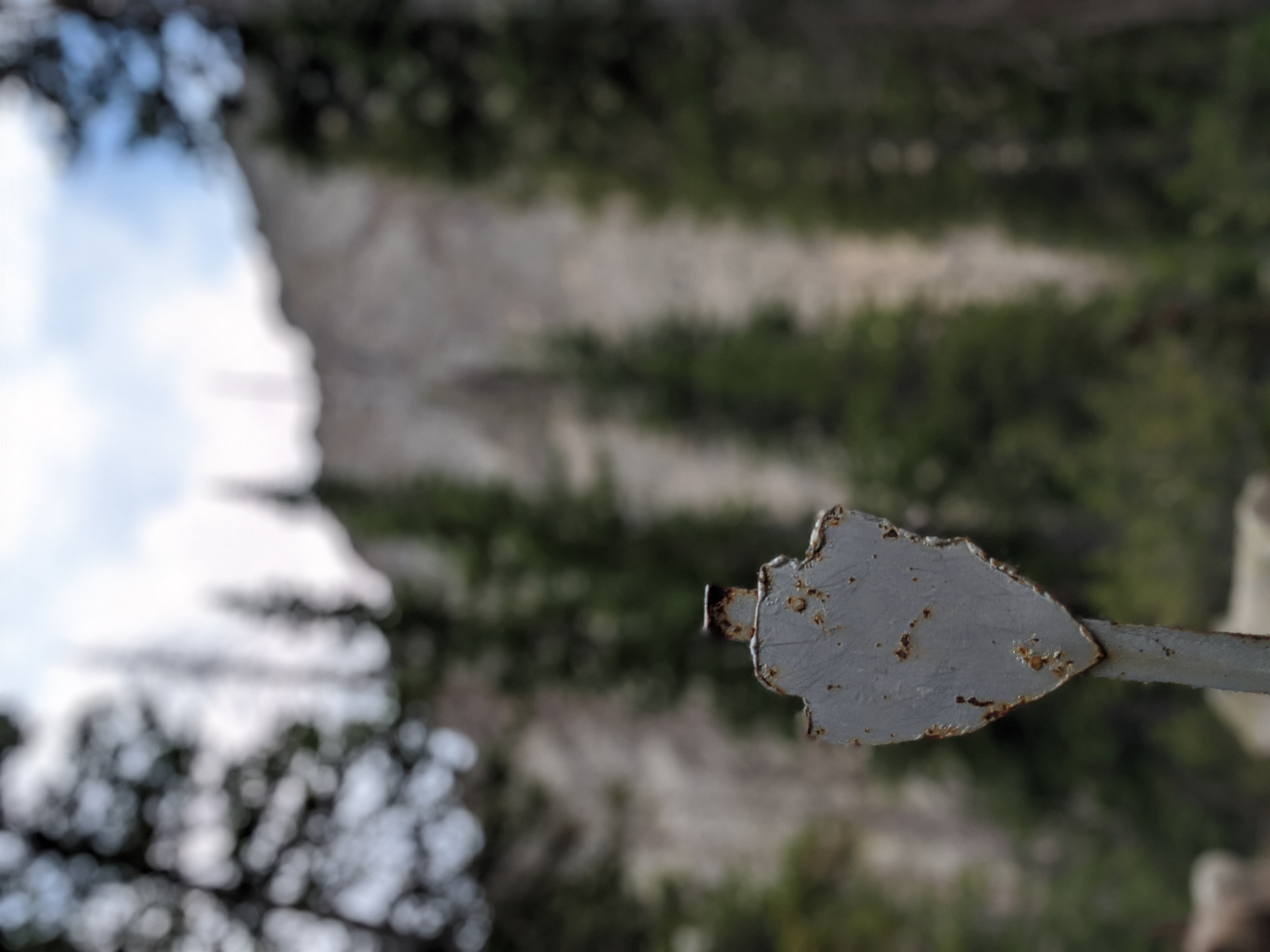
We were rewarded after slogging uphill for hours. The head of Skeleton Gulch opened up into several large meadows with the serene Sawmill Creek burbling through. It made clean water access from camp just a short walk away. It also added some ambiance to my inevitable snoring once I hit my sleeping pad.
Dehydrated meals never taste as good as when you finish a long hike the first day with the heaviest loads you’ll carry the entire trip. This was no exception. We were bushed but it didn’t stop us from snapping a few photos and glassing for critters from the camp site. Evening storms kept things interesting but in the end it was only the mosquitoes that really bothered us. Somewhere my 100% deet hid in my backpack, not wanting to be found.
Hitting the sleeping bag that night was a little rough. I slept in short bursts but overall I rested up and was downright plucky for the adventure the next morning.
Thunder Pass
When you snag a site in Rocky Mountain National Park you might want to try and get more than a single night. Part of my tactic in getting the site at all was in choosing Monday and Tuesday as my overnights. That all but guaranteed me a spot even in August. So what do you do with a second night? Well a day trip of course!
I’d agonized over bringing my fly rod and ultimately left it in the truck at the trailhead. I was already carrying my binoculars and tripod, and my poor pack felt maxed out with my bear keg. I still wanted to check out Thunder Pass and Michigan and Snow Lakes at the top of the mountain.
Unfortunately in order to do that, we needed to descend Skeleton Gulch, go over Grand Ditch, and then go back up Box Canyon to Thunder Pass. Thankfully Andrew was a good sport with all of this. Funny thing is, on the map the two areas were less than two miles away in a straight line. It’s just a case of “You can’t get there from here” without some serious climbing equipment and lack of fear.
It turns out, going down with a daypack is much quicker than going uphill fully loaded, go figure. We made excellent time to Grand Ditch and passed a group of campers at Box Canyon.
The views just kept getting better and better as we hiked the switchbacks on the face of the mountain leading up to Thunder Pass. There was a snow field in the bowl leading up to the pass, and with the sun beating down on me I felt it might be a good time to do a snow angel. I thought better of it, and we soon left RMNP on foot. Passing a wooden sign to State Forest State Park where the lakes lie at the foot of massive mountains.
Michigan Lakes
We crested the ridgeline and there it was. The Michigan Lakes is a series of small lakes formed by runoff from the mountains, and from Snow Lake just 300 feet above. Cradled by mountains in nearly all directions the cold water flows into the bowl below providing oxygen and mineral rich fresh water to lakes teeming with trout.
Bushed from our hike we chose the ridgeline to take our lunch. While we chewed away on jerky and slaked ourselves with water two moose wandered into view in the lake below. I broke out my binoculars, and Andrew his camera for some gawking at our visitors.
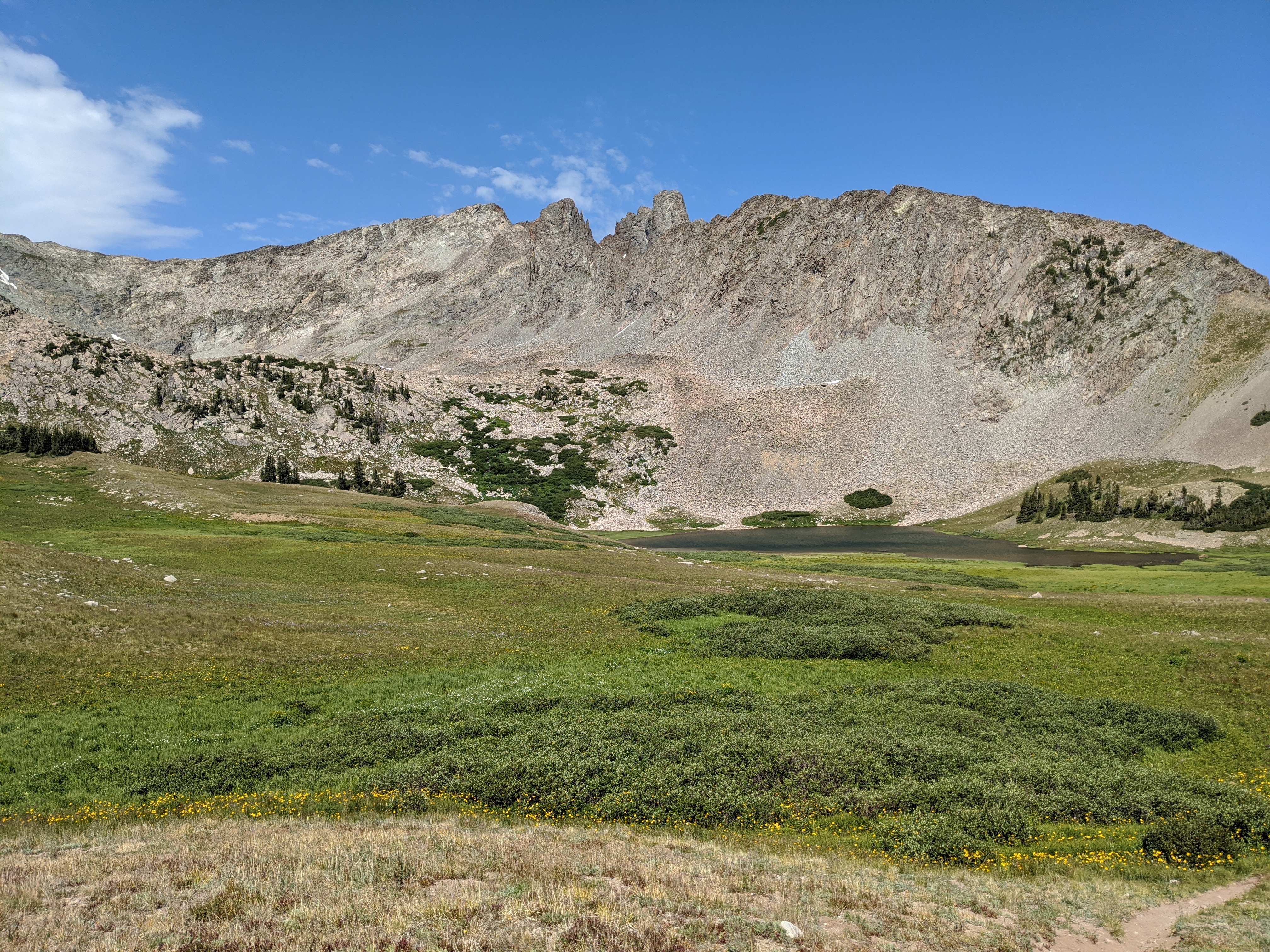
The hike wasn’t without seeing any fish though. On our hike back to camp I noticed some flashes in the ditch. Lo and behold! There were trout holding in the Grand Ditch. The Forest Service road itself runs for some 30 miles. The road runs through both the RMNP Wilderness and Neota Wilderness. This gave me the idea of fishing it all the way. However, a dusty Forest Service Road is not exactly my idea of a fun hike.

Pack Out
Sleeping that second night in our camp was a little like time traveling. Apparently I hit my sleeping bag and before Andrew had even gotten settled into his bag I was snoring. Unlike the night prior I didn’t wake until it was time for coffee.
The sunrise was fantastic over the mountains, and despite two nights without any critters in our valley other than bloodsucking mosquitoes a mule deer doe wandered into camp as we enjoyed breakfast.
Camping Inside the Park
I’d recommend anyone camp overnight in a National Park. I’d hit 14 National Parks in 14 days with my dad and brother after I graduated high school in 2005 and I still mark it as a cherished memory. At the time we stayed at KOA campgrounds as they were easy and we didn’t have to pack in. I encourage anyone to get out and tent camp if they’ve never done it.
However, the backpacking experience, and sleeping inside the National Park is really a different experience. The Rocky Mountain National Park Wilderness experience adds some hoops to jump through, but just like every other barrier to entry, it makes the experience all the more rewarding.
If you’re looking to backcountry camp inside of Rocky Mountain National Park I can attest that Skeleton Gulch, Box Canyon, and Ditch Camp are all well appointed and gorgeous locations.
| Why am I doing this? I’m on a quest to hike, camp, hunt, or fish on all of Colorado’s federally designated Wilderness Areas. Check out all the articles here! |

